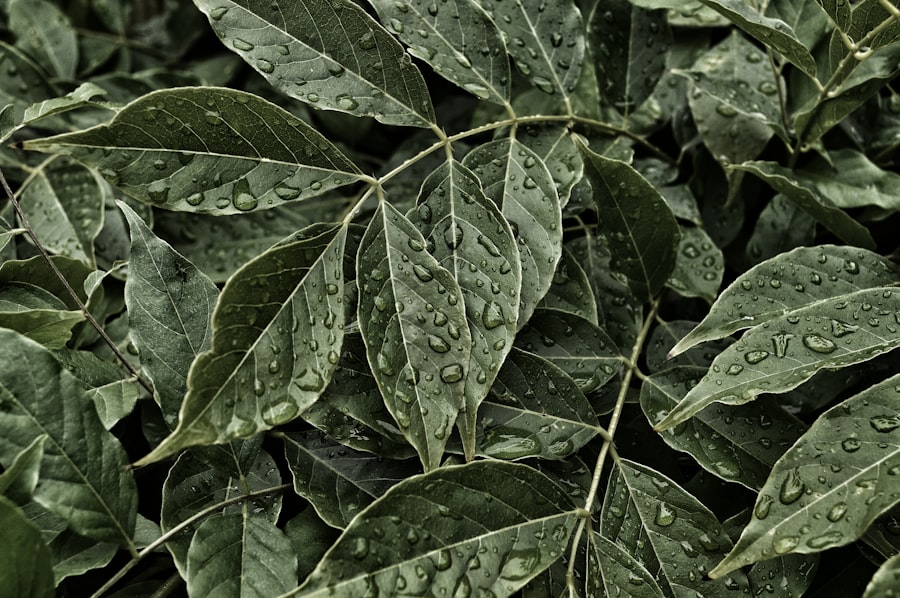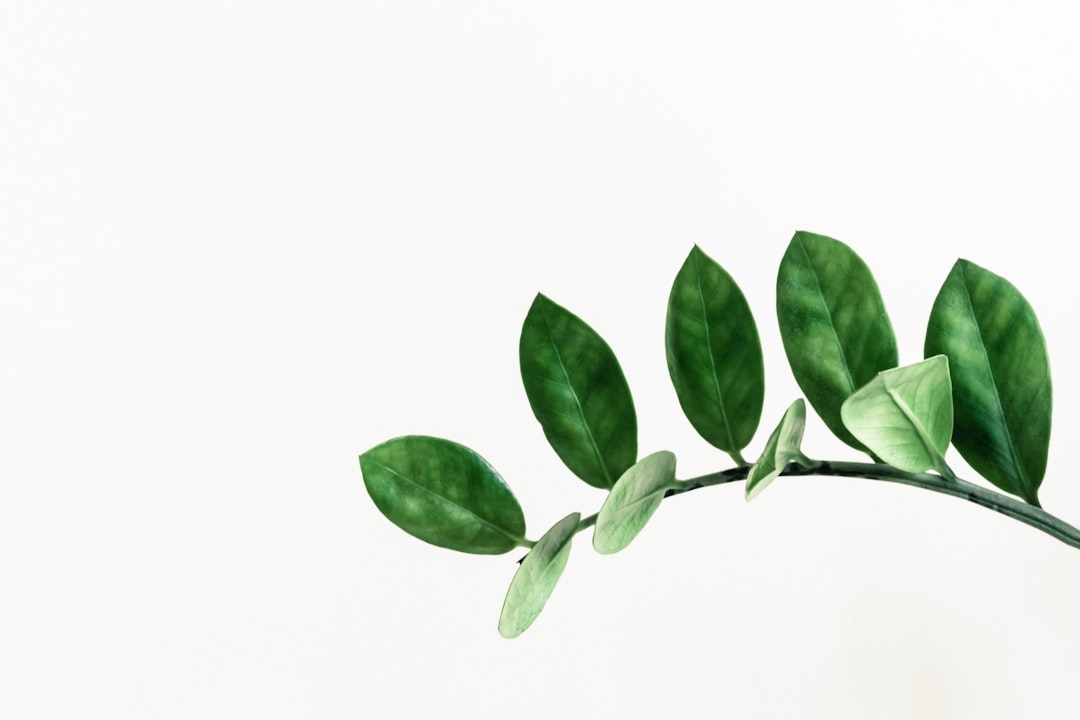Plant leaf identification is a fundamental skill that serves as a gateway to understanding the broader ecosystem. Leaves are not merely the green appendages of plants; they are vital organs that perform photosynthesis, respiration, and transpiration. By identifying leaves, one can gain insights into the plant’s ecological role, its habitat preferences, and its potential uses in medicine, agriculture, or horticulture.
For instance, recognizing the leaves of medicinal plants can lead to the discovery of natural remedies, while identifying invasive species can help in conservation efforts. Moreover, leaf identification fosters a deeper connection with nature. It encourages individuals to observe their surroundings more closely, enhancing their appreciation for biodiversity.
This practice can be particularly beneficial in educational settings, where students learn to recognize local flora and understand the interdependence of species within an ecosystem. By engaging with plant life through leaf identification, individuals can cultivate a sense of stewardship for the environment, promoting conservation and sustainable practices.
Key Takeaways
- Plant leaf identification is important for understanding the natural world and for various practical purposes such as gardening and environmental conservation.
- Leaf shapes and arrangements can provide valuable clues for identifying different plant species.
- Examining leaf margins and tips can help distinguish between similar plant species.
- Noting leaf venation patterns can aid in the accurate identification of plants.
- Recognizing leaf textures and surfaces, as well as considering leaf color and pigmentation, are important factors in plant leaf identification.
Understanding Leaf Shapes and Arrangements
Leaf Shape and Habitat
Understanding leaf shapes allows botanists and enthusiasts to make educated guesses about a plant’s habitat and adaptations. By recognizing the shape of a leaf, one can infer the type of environment it thrives in.
Phyllotaxy: The Arrangement of Leaves on a Stem
The arrangement of leaves on a stem, known as phyllotaxy, provides further clues for identification. Leaves may be arranged alternately, oppositely, or whorled around the stem. For example, plants with opposite leaf arrangements, such as the common mint (Mentha), often exhibit a square stem, which is a distinctive characteristic of the Lamiaceae family.
Optimizing Light and Minimizing Shading
Observing leaf arrangements not only aids in identification but also reveals how plants optimize light capture and minimize shading from neighboring foliage. By understanding how leaves are arranged, we can gain insights into the intricate relationships between plants and their environment.
Examining Leaf Margins and Tips

The margins and tips of leaves are often overlooked yet are crucial for accurate identification. Leaf margins can be classified as entire (smooth), serrated (toothed), or lobed (indented). For example, the serrated margins of a holly leaf (Ilex aquifolium) are not only distinctive but also serve a purpose; they deter herbivores by making the leaves less palatable.
Similarly, lobed leaves, such as those of the oak tree (Quercus), can help reduce water loss by minimizing surface area exposed to sunlight. The tips of leaves can also vary significantly and provide additional identification clues. Leaf tips may be acute (pointed), obtuse (blunt), or even rounded.
The sharp tips of conifer needles, for instance, are adapted to shed snow more effectively, preventing branch breakage during winter months. By carefully examining these features, one can differentiate between species that may otherwise appear similar at first glance.
Noting Leaf Venation Patterns
Leaf venation patterns are another essential aspect of leaf identification. The arrangement of veins within a leaf not only contributes to its structural integrity but also reflects the plant’s evolutionary adaptations. Venation patterns can be classified into two primary types: parallel and reticulate.
Parallel venation is commonly found in monocots like grasses and lilies, where veins run alongside each other from the base to the tip of the leaf. This pattern allows for efficient nutrient transport while maintaining flexibility. In contrast, reticulate venation is typical of dicots such as maple and oak trees.
This network of interconnected veins provides strength and support to larger leaves while facilitating efficient water and nutrient distribution. Observing these patterns can reveal relationships between different plant families and help identify species that share similar ecological niches. For example, recognizing the distinct reticulate venation in a leaf can immediately indicate that it belongs to a dicotyledonous plant.
Recognizing Leaf Textures and Surfaces
The texture and surface characteristics of leaves can vary widely among species and serve as important identification markers. Leaf surfaces may be smooth, hairy (pubescent), waxy (glabrous), or even spiny. For instance, the velvety texture of lamb’s ear (Stachys byzantina) is not only distinctive but also serves a purpose; the fine hairs help reduce water loss by trapping moisture in arid environments.
Conversely, the waxy surface of many succulents aids in water retention by minimizing evaporation. Additionally, some plants exhibit specialized structures on their leaf surfaces that contribute to their identification. For example, the presence of trichomes—tiny hair-like structures—can indicate adaptations to specific environmental conditions or herbivore deterrence strategies.
By examining these textures closely, one can gain insights into how plants have evolved to thrive in their respective habitats.
Considering Leaf Color and Pigmentation

Leaf color is often one of the most noticeable features when identifying plants. While green is the predominant color due to chlorophyll’s presence, variations exist that can provide valuable clues about a plant’s identity and health. For instance, red or purple pigmentation in leaves may indicate the presence of anthocyanins, which can serve protective roles against UV radiation or herbivory.
The vibrant colors of autumn foliage result from chlorophyll breakdown and the increased visibility of these pigments. Moreover, some plants exhibit variegated leaves—those with patches of different colors—which can be a result of genetic mutations or environmental stressors. Variegation is commonly seen in ornamental plants like the pothos (Epipremnum aureum) and can be an important characteristic for identification.
Understanding how leaf color changes throughout the seasons or in response to environmental conditions can enhance one’s ability to identify plants accurately.
Identifying Unique Leaf Structures
Certain plants possess unique leaf structures that set them apart from others within their families or genera. For example, the needle-like leaves of conifers such as pines (Pinus) are adapted for survival in cold climates; their shape minimizes water loss while allowing snow to slide off easily. Similarly, the fleshy leaves of succulents like aloe vera (Aloe barbadensis) store water efficiently, enabling them to thrive in arid environments.
Another fascinating example is the modified leaves known as bracts found in plants like poinsettias (Euphorbia pulcherrima). These colorful structures often attract pollinators while serving as protective coverings for flowers.
Recognizing these unique adaptations not only aids in identification but also provides insight into how plants have evolved to meet their ecological needs.
Using Leaf Identification Guides and Resources
For those interested in delving deeper into plant leaf identification, numerous guides and resources are available to assist in this endeavor. Field guides often provide detailed illustrations and descriptions of various species, making them invaluable tools for both novice and experienced botanists. These guides typically categorize plants based on key characteristics such as leaf shape, arrangement, and margin type, allowing users to narrow down their options systematically.
In addition to traditional field guides, online databases and mobile applications have emerged as powerful resources for plant identification. Websites like iNaturalist allow users to upload photos of leaves and receive feedback from a community of experts and enthusiasts. Such platforms not only facilitate identification but also foster collaboration among individuals passionate about botany and conservation.
Utilizing Technology for Leaf Identification
The advent of technology has revolutionized the way we approach leaf identification. Mobile applications equipped with image recognition software enable users to take photographs of leaves and receive instant identification suggestions based on visual characteristics. Apps like PlantSnap and PictureThis utilize advanced algorithms to analyze leaf shapes, colors, and textures against extensive databases of plant species.
Furthermore, social media platforms have become valuable spaces for sharing identification queries and receiving input from knowledgeable communities worldwide. Users can post images of unfamiliar leaves and tap into collective expertise for assistance in identifying them accurately. This integration of technology not only streamlines the identification process but also encourages engagement with nature through shared experiences.
Practicing Observation and Comparison Techniques
Developing proficiency in leaf identification requires practice and keen observation skills. One effective technique is to create a personal herbarium—a collection of pressed leaves accompanied by notes on their characteristics and habitats. This hands-on approach encourages individuals to closely examine each leaf’s features while reinforcing memory retention through tactile engagement.
Additionally, comparing leaves from different species side by side can enhance one’s ability to discern subtle differences that may not be immediately apparent when viewed individually. For instance, placing a maple leaf next to an oak leaf allows one to observe variations in shape, margin type, and venation patterns more clearly. Engaging in such comparative exercises fosters a deeper understanding of plant diversity while honing identification skills.
Seeking Professional Help for Difficult Cases
Despite diligent observation and research efforts, some plant species may remain elusive or challenging to identify accurately due to their similarities with other species or lack of distinguishing features. In such cases, seeking professional help from botanists or local plant experts can provide valuable insights that may not be readily available through self-study alone. Botanical gardens often host workshops or guided walks led by knowledgeable staff who can share their expertise on local flora while assisting participants with identification challenges.
Additionally, universities with botany programs may offer resources or outreach opportunities for individuals seeking assistance with complex plant identification issues. Engaging with professionals not only enhances one’s understanding but also fosters connections within the botanical community. Through careful observation and study of various leaf characteristics—shapes, arrangements, margins, venation patterns, textures, colors, unique structures—individuals can develop a comprehensive understanding of plant diversity while honing their identification skills.
Whether through traditional guides or modern technology, the journey into plant leaf identification opens up a world rich with ecological knowledge and appreciation for nature’s intricate designs.
If you are interested in learning more about plant diseases and how to treat them, check out this article on how to identify and treat a diseased pine tree. It provides valuable information on recognizing symptoms of disease in pine trees and offers tips on how to effectively treat them. Understanding plant diseases is essential for maintaining a healthy garden or landscape.
FAQs
What is plant leaf identification?
Plant leaf identification is the process of distinguishing and categorizing different types of plant leaves based on their unique characteristics such as shape, size, color, texture, and vein patterns.
Why is it important to identify plant leaves?
Identifying plant leaves is important for various reasons such as gardening, landscaping, agriculture, and environmental conservation. It helps in determining the type of plant, its health, and its specific care requirements.
What are the common characteristics used for plant leaf identification?
Common characteristics used for plant leaf identification include the shape of the leaf (e.g., ovate, lanceolate, palmate), the arrangement of veins, the presence of lobes or serrations, the texture of the leaf surface, and the overall size and color of the leaf.
How can I tell plant leaves apart?
You can tell plant leaves apart by closely observing their unique characteristics such as shape, size, color, texture, and vein patterns. Using a field guide or plant identification app can also be helpful in distinguishing between different types of plant leaves.
Are there any tools or resources available for plant leaf identification?
Yes, there are various tools and resources available for plant leaf identification, including field guides, plant identification apps, online databases, and botanical gardens. These resources can provide detailed information and images to aid in the identification process.

